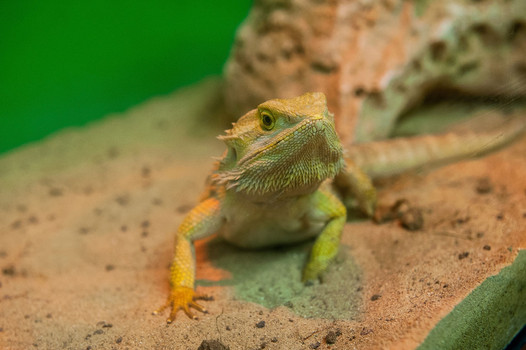Science Daily reported today that a team of researchers from Hungary and the UK have shown the first evidence that reptiles can learn through imitation. Before this, learning through imitation was thought to be unique to humans and their closest relatives.
To understand the significance of the finding, a distinction must be made between imitation and emulation. Imitation refers to an individual not only mimicking what it sees, but understanding why it is doing the action. An example would be a chimp learning how to use a stick to “fish” for termites from its mother. Emulation, on the other hand, is copying behavior without knowing the reason for doing so. For example, parrots can mimic human speech, but it is doubtful that they understand the meaning of the words they repeat.
The researchers used bearded dragons in their study. They trained one lizard to open a wire door which covered a hole in a wooden board. The door was built to slide horizontally left or right on a rail. When the first bearded dragon successfully opened the door by sliding the door sideways with its head, it was rewarded with a mealworm.
Then, an experimental group of eight lizards were allowed to watch the first lizard open the door, while a control group was left to its own devices. All members of the experimental group were able to successfully open the door, while no members of the control group managed to do so.
A key observation leading to the conclusion that the lizards were demonstrating imitation was that they all opened the door using a sliding head motion, the same way the lizard who demonstrated the action did. The researchers concluded then that the experimental group was truly imitating the first lizard, rather than stumbling onto the solution themselves.
Mammals and reptiles share a common ancestor. The discovery of imitation in reptiles could shed light on the evolution of cognition.















